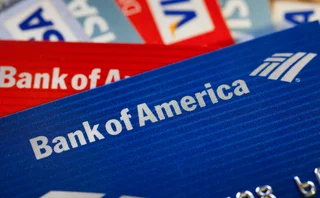SEC: Standard Best Execution Data Needed
NEW YORK—The lack of standardized execution quality data in the equity options markets is adding fuel to the U.S. Securities and Exchange's (SEC's) drive toward penny pricing in the U.S. options market, according to a recent SEC report.
Although order-routing firms have improved their processes to obtain best execution over the past six years, some are still using other competitive factors to determine which market centers should receive customer orders since many market centers often display the same best price.
Options exchanges do not provide standardized execution quality statistics, so most firms only analyze execution quality provided by their own customer orders, the report finds. Because the industry lacks standardized, easy-to-access execution quality data, firms risk not achieving thorough best execution quality reviews.
Staff from the SEC's Office of Compliance Inspections and Examinations worked with staff from the market regulation division to examine a series of options order routing practices of eight broker-dealers that make up a large amount of retail options order flow.
Researchers looked at data from late 2005 and early 2006. The data does not take into account the "penny pilot" program, a six-month pilot program that took effect on Jan. 26 in which the options exchanges are quoting certain series of 13 options classes in one-cent rather than five- or 10-cent increments. Because many options prices are still quoted in five- and 10-cent values, "spreads remain artificially wide and the excess dealer profits often are shared with order flow providers through payment arrangements," say the report's authors. As a result, payment-for-order-flow and other inducements are still major considerations for broker-dealers making order-routing decisions, the report says.
The report points to three options exchanges—the Boston Options Exchange, the Chicago Board Options Exchange and the International Securities Exchange—that have seen improvements in price competition by allowing penny trading at prices that are better than displayed national best bid or offer (NBBO). Yet "most firms examined have been unwilling to pursue such better prices for a meaningful amount of order flow," the researchers write.
Among the eight broker-dealers interviewed, the SEC asked compliance, routing and best execution employees about their use of smart-routing technology, order flow in the options market, the possibility of options market price improvement and how often execution quality reviews are conducted.
Six of the eight broker-dealers use smart router technology for at least some retail options order flow. The two not using smart routing for retail order flow use it for portions of institutional customer order flow. Five of the eight route order flow to affiliated specialists or market markers. Seven have a stake in one or more exchanges and these "ownership interests appear to influence where a firm routes customer orders," the report finds.
The report focuses mainly on the retail side of options market price improvement and most of the eight reported that retail-sized orders are electronically routed to options exchanges and executed at the NBBO through options' exchanges automatic execution systems.
All of those interviewed say they do execution quality reviews, but the SEC found that these examinations "do not allow them to completely assess the quality of executions in options on each exchange."
The options markets don't have to adhere to a reporting standard like the equity markets, the report says. As a result, reviews often only include the quality of executions that these broker-dealers' own orders received on each market. If a firm doesn't route an order to an exchange, that exchange is not included in the review.
"The lack of standardized, widely available information concerning execution quality may affect firms' ability to conduct robust reviews of execution quality," the report concludes.
Last year, Banc of America Securities (BAS) added smart order routing for equity options to its InstaQuote execution management system. The platform is Internet-based, but the underlying technology is proprietary software developed by BAS (DWT, Feb. 6, 2006). The Nasdaq Stock Market started offering connectivity and routing to options exchanges in the first quarter of 2006 to become a smart-routing provider for market participants (DWT, Aug. 29, 2005).
Chloe Albanesius
Only users who have a paid subscription or are part of a corporate subscription are able to print or copy content.
To access these options, along with all other subscription benefits, please contact info@waterstechnology.com or view our subscription options here: http://subscriptions.waterstechnology.com/subscribe
You are currently unable to print this content. Please contact info@waterstechnology.com to find out more.
You are currently unable to copy this content. Please contact info@waterstechnology.com to find out more.
Copyright Infopro Digital Limited. All rights reserved.
As outlined in our terms and conditions, https://www.infopro-digital.com/terms-and-conditions/subscriptions/ (point 2.4), printing is limited to a single copy.
If you would like to purchase additional rights please email info@waterstechnology.com
Copyright Infopro Digital Limited. All rights reserved.
You may share this content using our article tools. As outlined in our terms and conditions, https://www.infopro-digital.com/terms-and-conditions/subscriptions/ (clause 2.4), an Authorised User may only make one copy of the materials for their own personal use. You must also comply with the restrictions in clause 2.5.
If you would like to purchase additional rights please email info@waterstechnology.com
More on Trading Tech
After acquisitions, Exegy looks to consolidated offering for further gains
With Vela Trading Systems and Enyx now settled under one roof, the vendor’s strategy is to be a provider across the full trade lifecycle and flex its muscles in the world of FPGAs.
Enough with the ‘Bloomberg Killers’ already
Waters Wrap: Anthony interviews LSEG’s Dean Berry about the Workspace platform, and provides his own thoughts on how that platform and the Terminal have been portrayed over the last few months.
BofA deploys equities tech stack for e-FX
The bank is trying to get ahead of the pack with its new algo and e-FX offerings.
Pre- and post-trade TCA—why does it matter?
How CP+ powers TCA to deliver real-time insights and improve trade performance in complex markets.
Driving effective transaction cost analysis
How institutional investors can optimize their execution strategies through TCA, and the key role accurate benchmarks play in driving more effective TCA.
As NYSE moves toward overnight trading, can one ATS keep its lead?
An innovative approach to market data has helped Blue Ocean ATS become a back-end success story. But now it must contend with industry giants angling to take a piece of its pie.
BlackRock, BNY see T+1 success in industry collaboration, old frameworks
Industry testing and lessons from the last settlement change from T+3 to T+2 were some of the components that made the May transition run smoothly.
Banks seemingly build more than buy, but why?
Waters Wrap: A new report states that banks are increasingly enticed by the idea of building systems in-house, versus being locked into a long-term vendor contract. Anthony explores the reason for this shift.







